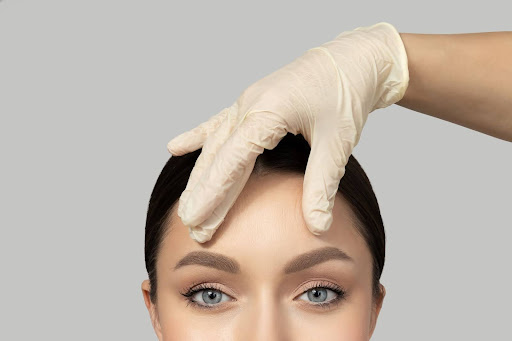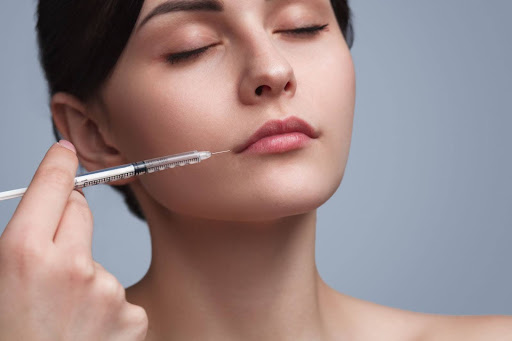Migraines are more than just headaches; they are complex neurological conditions that can significantly impact a person’s quality of life. Chronic migraine, in particular, is a debilitating condition characterized by experiencing headache days for up to 15 days per month, with at least eight of those days involving migraines. For those who endure the relentless throbbing, nausea, and sensitivity to light and sound, finding effective treatment can feel like an elusive quest.
Amidst the array of treatment options available, Botox injections have emerged as a promising avenue for migraine management. Originally known for its cosmetic purposes, Botox, or Botulinum toxin, has demonstrated efficacy in alleviating migraine symptoms for certain patients. Let’s delve into the mechanism, benefits, considerations, and potential side effects associated with Botox for migraines!
What is Botox?
Botox, derived from Clostridium botulinum, is a neurotoxic protein used in medical treatment and cosmetic procedures. Administered via injection, it targets specific muscles, blocking nerve signals that cause muscle contraction. This results in temporary relaxation of muscles, commonly utilized to reduce the appearance of wrinkles and treat various medical conditions.
Botox injections offer an option for patients seeking to address issues such as drooping eyelids or muscle spasms. By blocking nerve impulses, Botox can also effectively alleviate symptoms associated with conditions like chronic migraines or muscle stiffness. Its precise action on muscles and nerves makes it a versatile treatment option.
Book a Consultation with Botox Specialists
How Can Botox Treatments Reduce Migraines?
Botox reduces migraines by targeting specific muscles and nerves involved in headache generation. When injected into key areas, it blocks the release of neurotransmitters responsible for pain transmission and muscle contraction. This inhibits the hyperactivity of sensory nerves, reducing the frequency and intensity of migraine episodes.
For individuals with chronic migraines, Botox injections offer relief by decreasing headache days and mitigating associated symptoms like muscle weakness and migraine pain. The treatment is often integrated into a comprehensive migraine treatment plan, with injections strategically placed in designated sites to optimize efficacy.
Through its precise action on nerve endings and pain signals, Botox provides a therapeutic solution for managing migraine symptoms in adults, offering a promising option for those seeking relief from the burden of chronic migraines.
Types of Headaches Botox Can Treat
Since a person can experience the effects of a wide range of different types of headaches, botox can also treat a wide range of different types of migraine headaches. Below are some of the most common types of headache disorders that Botox preventative treatment can help with:
- Chronic Migraine: Defined as headaches occurring on 15 or more days per month.
- Episodic Migraine: Headaches occurring less frequently than chronic migraines but still affecting the quality of life.
- Tension-Type Headache: Characterized by mild to moderate pain often accompanied by muscle tension.
- Cluster Headache: Intense, recurrent headaches typically occurring in clusters over weeks or months.
What Migraine Symptoms Does Botox Alleviate?
Botox effectively alleviates various migraine symptoms, offering relief for adults seeking comprehensive therapy. Administered via targeted injections, it reduces headache days and associated symptoms, complementing preventive treatments. By targeting specific injection sites, Botox provides sustained relief from acute migraine episodes, addressing additional symptoms and enhancing overall migraine therapy. Here are some key symptoms that Botox can alleviate:
Headache Pain
Botox injections effectively mitigate the severity and duration of migraine headaches, providing respite from debilitating throbbing or pulsating pain. By blocking pain signals and relaxing muscles, Botox offers sustained relief, reducing the frequency of migraine days and allowing individuals to regain control over their daily activities.
Sensitivity to Lights and Sounds
Photophobia and phonophobia, common symptoms of migraines, are alleviated by Botox treatment. By modulating the activity of sensory nerves and reducing muscle tension, Botox diminishes sensitivity to light and sound, enabling patients to tolerate previously intolerable stimuli and enhancing their overall comfort and well-being.
Nausea and Vomiting
Botox injections offer relief from the distressing symptoms of nausea and vomiting often accompanying migraines. By targeting muscles involved in the vomiting reflex and modulating neurotransmitter release, Botox reduces the severity and frequency of gastrointestinal symptoms, allowing patients to experience fewer disruptions to their daily routines and enjoy improved quality of life.
Muscle Tension and Stiffness
Chronic migraines frequently manifest with muscle tension and stiffness, contributing to discomfort and exacerbating headache pain. Botox effectively addresses these symptoms by inducing muscle relaxation and inhibiting muscle contractions. By targeting specific muscle groups and preventing excessive muscle activity, Botox alleviates tension and stiffness, such as neck pain, promoting greater comfort and mobility for migraine sufferers.
Visual Disturbances
Botox treatment can ameliorate visual disturbances commonly associated with migraines, such as blurred vision, blind spots, or visual aura. By modulating the release of neurotransmitters involved in visual processing and reducing muscle tension around the eyes, Botox helps restore visual clarity and stability, allowing patients to navigate their surroundings with greater ease and confidence.
Is Botox a Recognized Medical Treatment For Migraines?
Yes, Botox is an established medical treatment for migraines, recognized by healthcare providers and headache specialists. Extensive studies demonstrate its efficacy in reducing migraine frequency and severity.
Unlike traditional medications, Botox targets neurons and muscle activity, offering a unique approach for adults with chronic migraines. It serves as a valuable option, particularly for individuals who have not responded well to other prescription drugs or who are seeking alternatives to medication overuse for headaches.
Do Insurance Companies Cover Botox for Migraines?
Insurance coverage for Botox for migraines varies among insurance plans and providers. While many health insurance plans cover Botox as a treatment option for adults with chronic migraines and persistent headaches, coverage may require prior authorization and documentation of treatment failure with other preventive therapies.
Some insurance providers offer coverage for Botox as part of comprehensive migraine management, recognizing its efficacy as both an acute treatment and preventative therapy. Patients should consult their insurance plans and providers to understand coverage options and potential out-of-pocket expenses.
Beyond Cosmetic Treatments: The Many Ways Women use Botox
Are There Any Risks or Considerations When Using Botox to Treat Migraines?
Considering Botox as a treatment option for migraines warrants understanding its associated risks and considerations. While generally deemed safe and effective, patients must be aware of potential side effects and consult their healthcare provider for comprehensive guidance.
Here are potential risks associated with botox for migraine relief:
- Injection Site Pain: Some individuals may experience temporary discomfort or soreness at the injection sites following Botox administration. This discomfort typically resolves within a few days.
- Muscle Weakness: Botox works by temporarily relaxing targeted muscles, which can lead to mild muscle weakness in the treated areas. While this effect is usually temporary, it may impact activities requiring muscle strength or coordination.
- Drooping Eyelids: In some cases, Botox injections near the eyes can cause temporary drooping of the eyelids (eyelid ptosis). While this side effect is generally mild and resolves on its own, it can affect vision temporarily.
- Allergic Reactions: Although rare, allergic reactions to Botox can occur. Symptoms may include itching, rash, swelling, or difficulty breathing. Patients with a history of allergies should discuss potential risks with their Botox administrator before undergoing Botox treatment.
Overall, while Botox is generally considered safe and well-tolerated for migraine treatment, it’s essential for patients to weigh the potential risks against the benefits and make informed decisions in consultation with their healthcare provider.
Get Botox for Migraine Treatment in Montreal
At Botox Montreal, we specialize in providing personalized Botox treatments tailored to your unique needs. Our skilled team offers comprehensive consultations to understand your concerns and develop a customized treatment plan. Using advanced techniques and premium products, we aim to achieve natural-looking results that enhance your natural beauty.
Whether you seek wrinkle reduction, migraine relief, or sweat reduction, our experienced practitioners are dedicated to delivering safe, effective, and comfortable treatments. Trust Botox Montreal for professional care and exceptional results that leave you feeling confident and rejuvenated. Schedule an appointment today and experience the difference firsthand.







